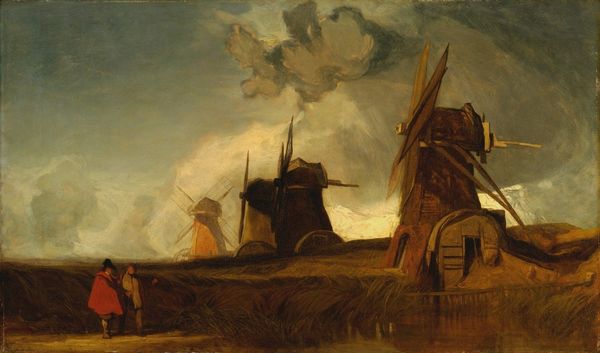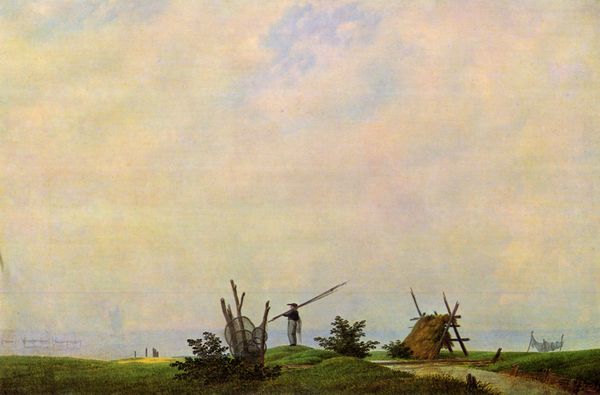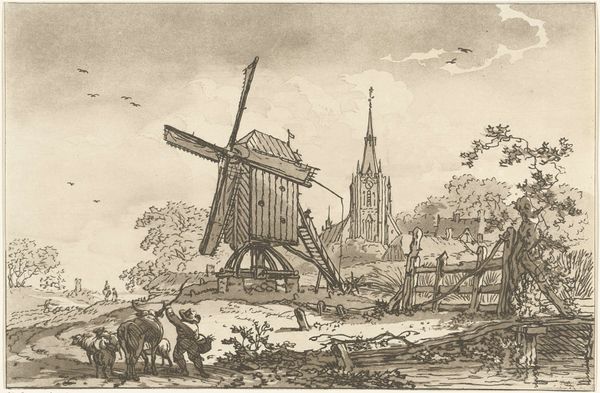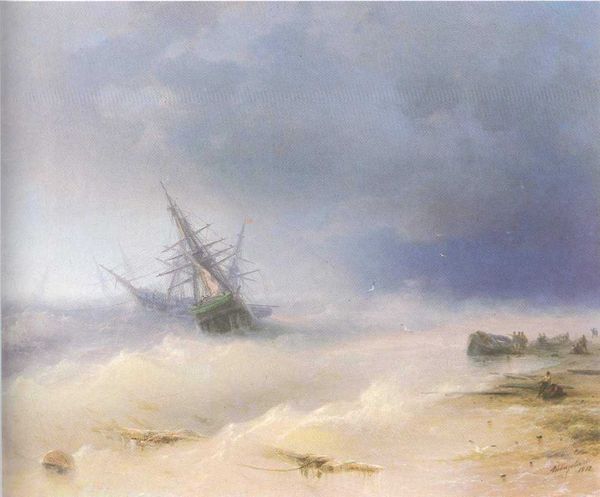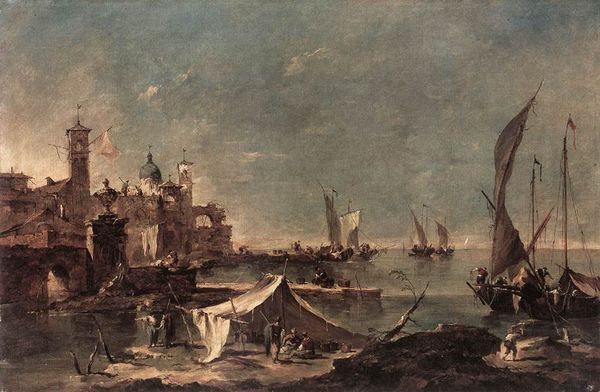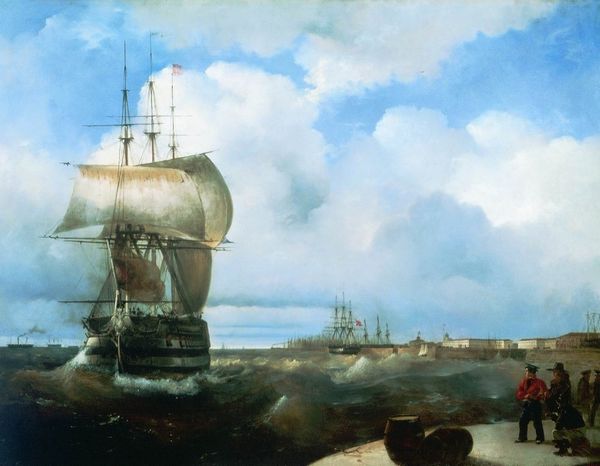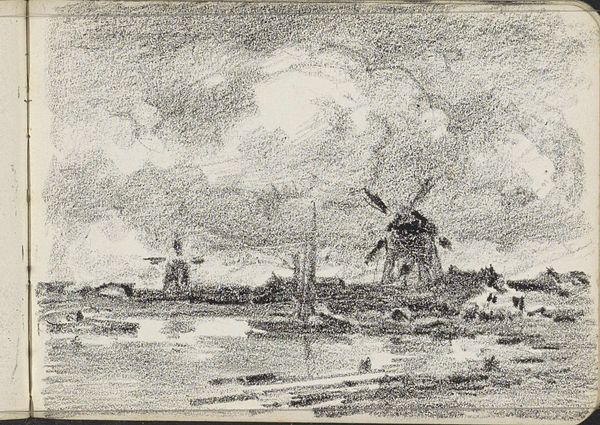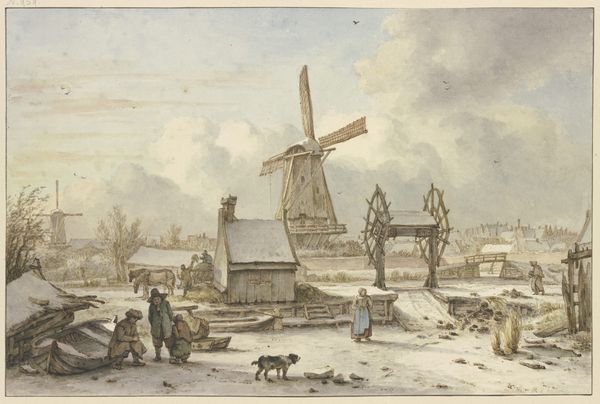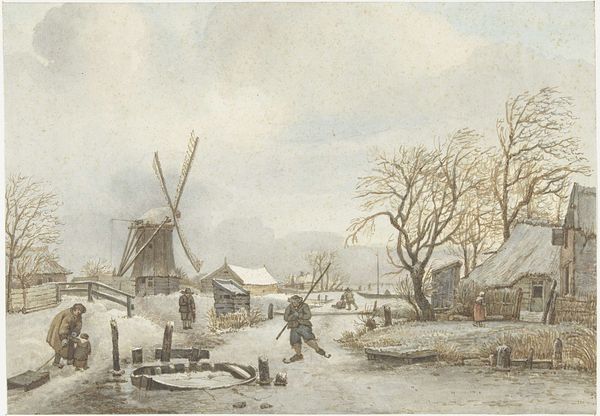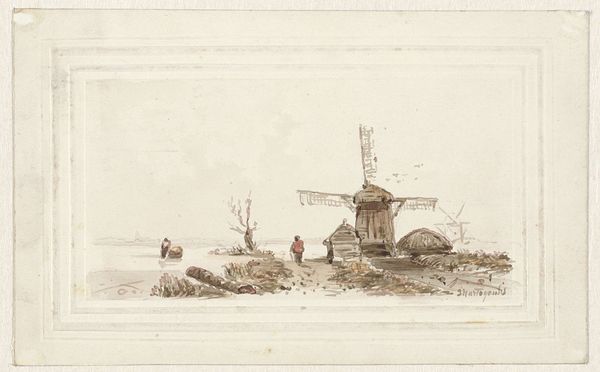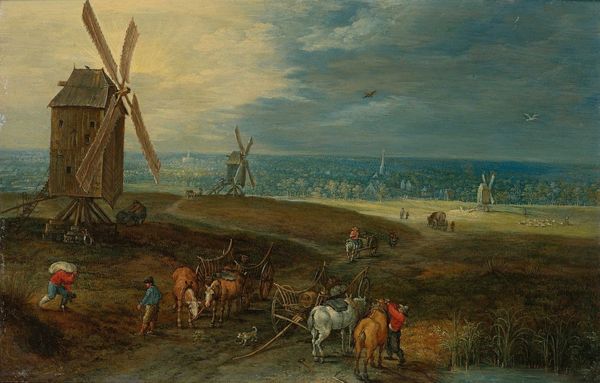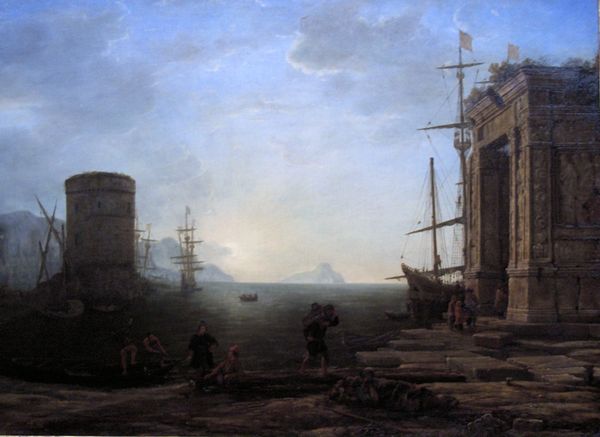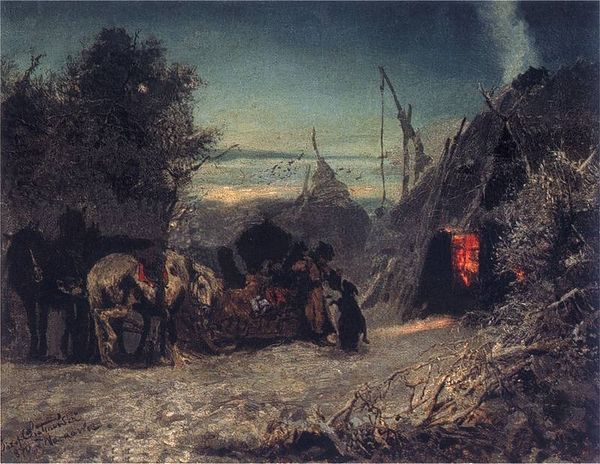
painting, oil-paint
#
painting
#
oil-paint
#
landscape
#
romanticism
#
realism
Dimensions: 67 x 96 cm
Copyright: Public domain
Editor: So, here we have Aivazovsky's "Windmill on the Sea Coast," painted in 1837, using oil paint. It definitely evokes a sense of early dawn… There’s something quite rustic and raw about its portrayal of labor near the sea. What’s your take on it? Curator: It's fascinating how Aivazovsky uses oil to depict not just the visual appearance but also the socio-economic realities of 19th-century coastal life. Look closely at the windmill: it's not idealized. It appears worn, its materiality hinting at the labor invested in its construction and maintenance, a dependence of coastal settlements on the structures’ use in grain production. Editor: It's interesting how the artist doesn't romanticize the workers, either. They look like they are busy working; this scene illustrates daily labor. Curator: Precisely. He portrays the interconnectedness of human labor and the sea. The windmill, the boats, and the figures on the shore, are parts of a whole. The piece underscores the means of survival for coastal communities. Also note how this contrasts with traditional landscapes which might have placed less emphasis on human labor or mundane structures. Does the artist focus primarily on the beauty of nature? Editor: Not necessarily. While the sea and sky are definitely beautiful, the worn appearance of the man-made objects really puts focus on how much effort it takes to live in this coastal area. It suggests life and commerce depends on labor and tools. Curator: Consider how the painting elevates, maybe unintentionally, the role of craft and manual labor within the accepted traditions of "high art". By situating the figures at the ground, hard at work and juxtaposing it with the industrial revolution happening inland. Editor: I see your point. It encourages me to think beyond just the visual appeal of this piece, really thinking about how everything works together, all the people working, how food gets made. It all illustrates what is required to have life on the sea. Thanks, I hadn't considered that angle. Curator: Indeed, considering materiality and process adds significant depth to how we engage with art. It shifts the focus from mere aesthetics to the material conditions and labor involved in both creating the artwork and the lifestyle depicted.
Comments
No comments
Be the first to comment and join the conversation on the ultimate creative platform.
